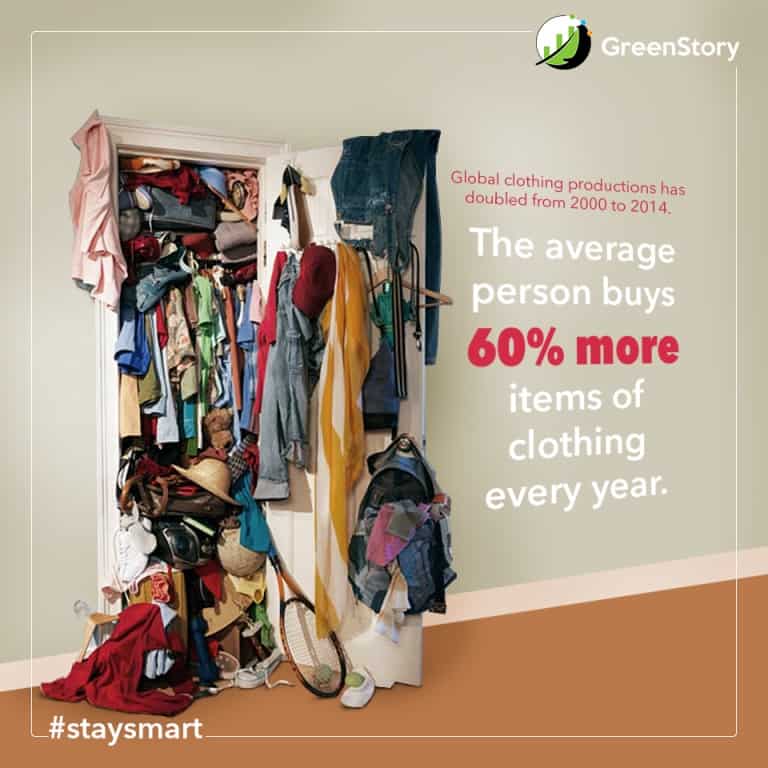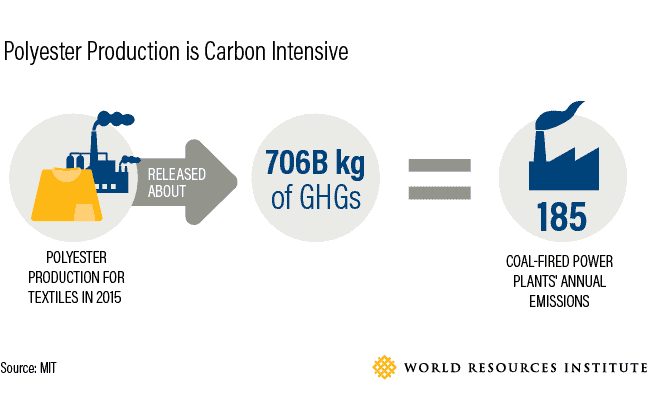
This is a guest post by Akhil Sivanandan, co-founder of research and marketing firm Green Story Inc.
With popular fast fashion brands such as Forever 21, H&M, and Zara dominating the market, it’s hard not to shop from these brands both in the mall and online. The convenience, the trendiness, and most importantly, the low cost makes it seem like it’s too good to pass up on.
A $3 white t-shirt? Yes! Jeans for only $20? Sign me up!
Like many green-minded consumers, when I was looking for ways to minimize my energy consumption and ecological footprint, I chose to improve my recycling habits, turn off the lights when leaving a room, and change my diet to reduce meat/dairy consumption. While this is all incredibly helpful, I realized one of the easiest and most impactful changes I could make was to start with my clothes and shopping habits.
So I looked into the cost of my fast fashion habit. From production to use, fast, ‘cheap’ fashion turns out to be more expensive on both your wallet and the environment.
Let me explain:
Traditionally, we have 2 fashion seasons: spring/summer and fall/winter. But fast fashion has completely changed that. Clothing is now being produced in an incredibly short timeframe, shorter than it has ever been before (Nature Climate Change, 2018). To match the ever-growing demand for new trendy clothing, the fast fashion industry is producing new designs and styles of clothing every few weeks. So, instead of 2 season cycles, there are almost 50-100 micro-seasons (Drew & Yehounme, 2017). That’s 50 times the impact we used to have.

And in the mad scramble to stay on top of the current trends, this creates increased waste. It is estimated that there are 20 new garments manufactured per person each year (7 billion x 20 = 140 billion garments in total/year! Yikes!) (Nature Climate Change, 2018). On top of that, we are buying 60% more than we were in 2000, but each garment is only being kept for half as long (Drew & Yehounme, 2017).
This shorter lifespan and reduced use creates higher manufacturing emissions altogether. And yes, I’m guilty of taking part in this cycle.

The production of textiles has become one of the most polluting and energy-intensive industries, producing almost 1.2 billion tonnes of CO2 per year, more than the international airplane and shipping industries (Nature Climate Change, 2018). Most of the manufacturing and production of fast fashion clothing happens in developing countries, mainly China and India. These factories rely on coal-fueled power plants, which increases the overall energy consumption of each garment altogether (Nature Climate Change, 2018).
The fine print:
What’s important to note is that the total emissions and energy consumption depend entirely on the materials being produced. Many fast fashion companies have started using synthetic fibres, with the most popular one being polyester. A single polyester t-shirt can generate up to 5.5kg of CO2E, which is double the emissions from cotton t-shirt production (Nature Climate Change, 2018).

But, cotton is a thirstier crop, requiring 2700 liters of water to make just one t-shirt. To put this into perspective, this is the same amount of water that an average person drinks in 2.5 years (Drew & Yehounme, 2017). This environmental burden creates an increased risk of droughts, biodiversity and soil quality concerns, and competition for resources between corporations.
Yikes! But there’s hope. Here’s what I figured we can do to help:
- Shop transparent and sustainable brands! Eco-Stylist, for example, uses their sustainable brand criteria to source and showcase stylish and ethical brands, and follows up with additional research when needed to make sure their recommendations are up to snuff.
- Demand better from these brands. Write to fast fashion companies and ask if they have measured their manufacturing costs or are aware of their environmental impacts.
- Reduce the amount of clothing you buy from fast fashion stores or better yet, stop shopping there altogether. With a reduced demand, the fast fashion industry will have to slow down and change their manufacturing processes.
- Explore second-hand options! Check out Eco-Stylist’s guide to sustainable fashion options like thrifting and swapping. From upcycling to thrifting to renting to DIY-ing, the options are endless.
- Invest in greener fabrics for your clothing items. Need some guidance? Check out Eco-Stylist’s guide to the most and least sustainable fabrics. It details the footprint of fabrics such as linen, tencel, and organic cotton. Find the fabric that suits you best and shop from sustainable, eco-fashion brands that make products from it.
How do you go about reducing your impact? Let us know!
*Article updated 10/14/22.

Sources:
- Drew, D., & Yehounme, G. (2017, July 5). The Apparel Industry’s Environmental Impact in 6 Graphics. Retrieved from https://www.wri.org/blog/2017/07/apparel-industrys-environmental-impact-6-graphics
- The price of fast fashion. (2018). Nature Climate Change,8(1), 1-1. doi:10.1038/s41558-017-0058-9










1 thought on “The Truth About Fast Fashion: Cheap for You but Costly to the Planet”
Enjoyed reading the article above, actually explains everything in detail,the article is very interesting and effective.
Thank you and good luck for the posts.